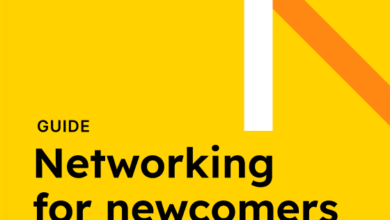7 Strategies to Attracting Workers into the Cleaning Industry


In recent years, employee recruitment and retention have become pain points for organizations nationwide. This has led to numerous articles about recruiting, retaining and developing employees.
Yet while most companies spend time and money marketing to prospective customers, they seldom put the same time and effort into marketing to potential employees. This is especially true in the cleaning industry, which has historically been plagued with labor shortages and high employee turnover because the jobs are perceived to be menial, low paying and lacking opportunity for advancement.
Fortunately, if there was a silver lining to the pandemic, surely it is the spotlight that was placed on the importance of cleaning — and cleaning technicians — in infection prevention. This increased awareness can and should be leveraged to better market the cleaning industry to prospective employees.
Career Benefits
There are numerous benefits to a career in the cleaning industry. Many of these were illuminated by the pandemic shutdown, inflation, and the increasingly volatile nature of employment in what are considered more glamorous industries, such as technology and entertainment.
Unlike most of these fields, the cleaning industry is essential. It is one that, if not recession-proof, is surely recession-resistant. People need clean environments to work, live, play and heal. Moreover, cleaning is a career that makes a real difference in the world — infection prevention saves lives.
This industry also provides opportunities for advancement. At the right company with the proper training, employees can move up from the frontline to team leads, supervisors, managers, and beyond in sectors ranging from healthcare and food service to aerospace and biotechnology. In short, for employees looking for meaningful work, steady pay, diverse work environments, and advancement opportunities, few industries have cleaning beat. Many companies are even starting to realize fair wages based on the cost of living are necessary to attract good workers.
The question for many industry employers is how to get the word out about these benefits. Below are some tried and true marketing techniques that can help attract top quality employees.
“Yes!” Marketing
Below are seven suggestions for how to better market job openings in the professional cleaning industry.
Terminology. While many in the industry know the word “janitor” comes from the Greek Goddess Janus (the gatekeeper), the reality is that the term carries, if not negative connotations, an undertone of short-term, unskilled employment. In healthcare, cleaning personnel are called environmental services (EVS) professionals. In other verticals, cleaning technician or infection prevention specialist denotes a skilled profession worthy of the healthy environments they create to save lives.
When promoting open positions, use job titles that reflect the importance of the work and the skills necessary to complete tasks.
Career path. When schools look for new teachers, they talk about tenure. When hospitals recruit medical interns, they stress permanency and advancement opportunities. The same should be true of the cleaning industry.
“When looking for long-term employees, employers need to market their positions as career opportunities,” advises Angela Gervino, CEO and president of the Gervino Group, a firm specializing in recruiting and human resources in the cleaning industry. “When interviewing candidates, give them a peek into the position, not only as it is today but also what it can develop into tomorrow. This will help candidates see the position’s potential instead of a dead-end job with no opportunity to learn, grow their skills, or advance within the organization.”
Titles. Titles are cheap, but they can effectively attract more desirable candidates. For example, there is quite a difference between marketing a “facility manager” position versus a “manager of facility excellence.” Which title will yield more interest? Remember, when playing around with titles, never stray too far from the job responsibilities. Recruiters don’t want to mislead, and they want to attract candidates interested in the available position.
Social media. “There are many social sites that are awesome in connecting you to the candidates you seek,” says Gervino. “One critical point, however, is to make sure it’s an outlet that people interested in the job opening use. You may get an experienced facility manager on LinkedIn, but chances are you won’t find cleaning technicians there, at least not in volume. Before you start any campaign, do your homework to figure out where the people you want to find are.”
Other social media pointers for posting job opportunities:
• Use the keywords people looking for those positions would use. For example, here, using the term janitor might be appropriate as that is a term people search.
• Include variations of terms, such as facility managers, facility operators and building managers.
• Use specific terms. If you are looking for someone to train your team, use cleaning technician trainer.
• If your position is local, include the geographical region so your opening will appear when job seekers search “cleaning technician jobs near me” or “facility management positions in Los Angeles County.”
Employee recognition. This is an area where many employers fall short, but the reason may not be obvious. Recognition is received and coveted differently by different people.
“When I help clients with their onboarding processes, I tell them to factor in ‘question time’ for new employees to answer questions about their preferences and any expectations they might have surrounding recognition,” says Gervino. “By recognizing employees in ways that they appreciate and make them feel good, the employer hits a home run every time.”
Good processes. Increasingly, company culture is driving job candidates’ decisions — and word spreads quickly. The interview and onboarding processes provide a glimpse of how the organization is set up and operates, which can figure significantly into a candidate’s decision to take — and keep — a position. A less-than-ideal experience can scare top candidates away. Conversely, an interview conducted in an atmosphere of camaraderie and onboarding that feels accepting and inclusive creates a hard-to-resist positive impression.
Employee testimonies. Few things carry more weight with prospective employees than positive reviews from current staff. Asking for and receiving reviews and testimonials should be a part of management’s annual performance-review process. However, they should be solicited as often as quarterly to monitor that the culture is on track and prevent any negative issues from festering.
There also should be a process to enable employees to submit written reviews and feedback on an ongoing basis. Employees willing to write positive reviews should be encouraged — never forced — to do so on sites such as Glassdoor, where job candidates often check out a company’s employee rating before applying for positions.
The cleaning industry lacks the glamour of some other sectors, but few industries come close when it comes to offering solid, steady employment, career advancement, and the chance to do good.
Ron Segura, founder and president of Segura & Associates brings over 55 years of experience in all segments of the cleaning industry. Ten of those years were spent overseeing the cleaning of over 4.5 million square feet of outsourced services for The Walt Disney Company. With 20 years of consulting both domestic and internationally, Ron has been assisting organizations to perform at maximum efficiencies, while raising the quality of service.
POSTED ON: 7/18/2023
Read More



